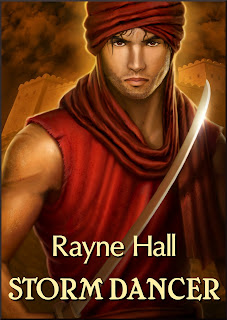The five main senses are seeing, hearing, smelling, tasting and touching.
This sense is the easiest to use, but it can be boring if used a lot. Choose details which characterise the place and show only what the point-of-view character would notice. To create atmosphere, describe the source and quality of the light. Examples: Blossoming dittany spilled over the slope. Black clouds smeared the sky. Punchbags hung like giant misshapen sausages from the wall. Tiny lizards darted across the broken floor tiles, tongues flicking. Golden sunlight dappled the lawn. Sundown bloodied the horizon.
Hearing
Sounds make a story exciting. Use this sense a lot when writing a ghost or horror story or a scary scene and whenever you want to increase the suspense. Include the sounds of footsteps, of furniture, of doors opening and closing, and of background noises. Can be used anywhere in the story, especially during suspenseful moments. Examples: The door squealed open. Her high heels clacked on the pavement. In the distance, a motor howled. The receptionist’s keyboard clicked, the water dispenser gurgled, and from next door came the hollow whine of the dentist’s drill.
Smelling
This sense is a powerful tool in the writer’s hand, because a single sentence about smells creates more atmosphere than a whole page of seeing. This is perfect if you want to keep your descriptions short but effective. Mention smells at the beginning of a scene, and whenever the point-of-view character arrives at a new place. You can also use it to describe a person. Consider mentioning two or more smells in one sentence. Examples: The air smelled of hairspray and bubblegum. The air smelled of boiled cabbage and disinfectant. The air was thick with charcoal smoke and diesel fumes. She smelled as if she had sprayed on all the samples from the perfumery counter.
Tasting
Use this only if it suits your story, for example, if the PoV is eating or drinking something. Examples: The curry was just as he liked it: hot and spicy, with a strong coriander flavour. The soup singed her gums with its sour taste. The coffee had that sharp-bitter taste of a too-often reheated brew. I savoured the iced coffee on my tongue, with its blissful blend of cold and creamy, bitter and sweet.
Touching
This includes what the PoV touches with her/his hands, and also how the ground feels underfoot, how garments feel on the body, how wind or rain feels in the face. In the widest sense, it can encompass temperature, balance, hunger, thirst and pain. Examples: Needles of hail pricked her cheeks as if she had dipped her face into a pincushion. Hot sweat soaked into her shirt, her knickers, her bra. The doorknob felt icy in her hand. She groped her way through the darkness, her fingers sliding across sharp-edged stones and damp sticky walls.
To make your writing vivid, I recommend using at least three of these senses in every scene.



